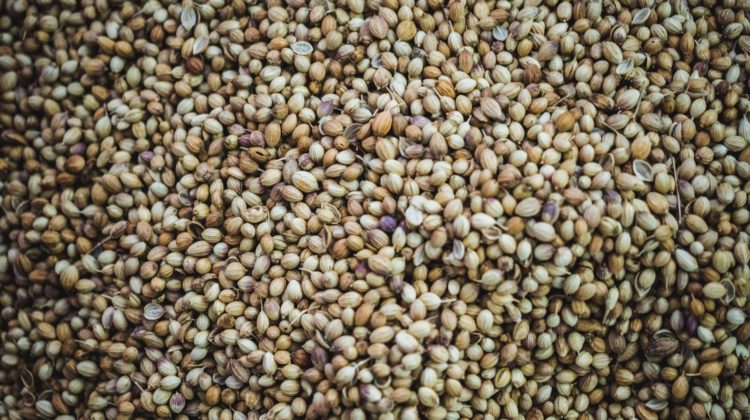
How to Make Feminized Cannabis Seeds Like a Pro
Seed feminization is all the rage among cultivators and manufacturers in the 420 industry. Why spend valuable resources on sexing crops when a single purchase ensures a garden of only bud-bearing females?
Large manufacturers are adopting this technique on a huge scale, making feminized cannabis seeds available to buy. However, it’s not a hyper-complicated process that requires reliance on dispensaries. Any grower can do it independently—all it takes is a bit of know-how.
Read on for a complete guide to rearing only female crops from day one.
Why Feminize Seeds?
Most cultivators are fans of fems. Learning how to grow feminized seeds is easier, each plant bears flowers, and you spend space and nutrients exclusively on future buds. What’s not to love?
Buying the female variant isn’t always optimal or even possible, though. Here’s why people opt for at-home feminization:
- Availability: Not every cultivar is available as female-only.
- Affordability: Weed can be pricey, so you grow it at home—but female seeds are often more expensive than regular ones at dispensaries.
- Self-sufficiency: Fertilized marijuana yields hundreds of seeds, reducing the need for future purchases.
How to Feminize Seeds
Marijuana seeds begin as ‘regular,’ developing into an approximately 50-50 split of male and female crops. Fems produce buds, acting as holding spaces for fresh seeds post-fertilization. Males supply the pollen used to propagate the cannabis family.
Growing feminized seeds changes the game—there’s no pollen, so you get only seedless flowers with high amounts of cannabinoids and terpenes. Humans learned how to bypass biology and manipulate nature.
The idea behind creating fem seeds is to remove the male chromosome, which requires cross-fertilizing one female plant with another. Since pollen doesn’t naturally occur in these crops, we need to introduce another element to the equation—ethylene.
Ethylene is a hormone responsible for ripening; it regulates how sex manifests in marijuana. Here’s the trick—lowering the element’s levels in female plants produces flowers rich in X chromosome pollen.
How do you control ethylene? Let’s look at two neat methods.
Technique #1: Colloidal Silver
Colloidal silver is a water-based solution with distilled microscopic silver particles. It has many reported health benefits and the capability to inhibit ethylene in plants.
You can purchase a silver solution over-the-counter in most health stores. Choose a product with around 30ppm silver for best results.
Feminization with colloidal silver is straightforward and has a near-100% success rate. The sprayed plant is a write-off because its flowers become toxic for consumption.
Luckily, you only need to sacrifice one crop to get heaps of female pollen. Here’s how:
- Choose a plant that’s early into flowering. Pick a specimen with desirable traits—big leaves, strong branches, and plenty of bud sites—and set it aside from the rest.
- Fill a spray bottle with the silver mix and soak the plants generously. Repeat twice a day for two weeks, sticking to a regular schedule.
- Isolate the silver-sprayed crop. Pollen sacs appear after a month; they burst soon after emerging and fertilize your entire garden.
Technique #2: Rodelization
The second seed feminization technique relies on the biological activity of flowering cannabis. It’s simple, organic, and perfect for cultivators iffy about using chemical agents.
Rodelization happens when female plants remain unpollinated at the end of their annual life cycle. Since staying seedless is an unnatural state for marijuana, it grows male pollen sacs to self-fertilize.
Bud growers would start curing long before rodelization, but if you’re after new seeds, this process can work in your favor. Here’s how to take advantage of it:
- Maintain the regular flowering stage till harvest time. Once it arrives, isolate one crop and leave it under the same blooming conditions.
- Let the plant sit under a steady 12/12 light cycle for another 2–3 weeks. Stick to the same feeding and watering schedule and inspect the internodes daily.
- Collect stamens and anthers (small, round pollen organs) as soon as they emerge.
Note that technique is more hit or miss than colloidal silver. Stressed fems don’t produce plenty of pollen, and their offspring may display hermaphrodite tendencies. Regardless, it’s a fantastic way to start your journey towards an all-natural female seed source.
Tackling Female Pollen
Once you have a female pollen source, it’s time for cross-fertilization.
Start by collecting sacs from your canna ladies. Leave them to dry for several days, then shake their fine powder onto a firm, dry surface. Store it in a glass jar for up to a year, or go straight to the next step.
This process calls for another flowering female. Select a plant two weeks into blooming—ideally a prolific specimen with traits you’d like to preserve.
Separate that crop and use a paintbrush to dust the pollen onto its buds and branches. A single particle is enough to produce a pod of new seeds, so you’re unlikely to mess this up.
Keep caring for your weed plants as usual for 4–6 weeks post-pollination. Their buds aren’t as sticky, but a bunch of new seeds awaits on the inside.
All that’s left to learn is how to flower feminized seeds and create a batch of seedless, smokable nugs.
Seed Feminization, Easy Cultivation
Knowing how to feminize cannabis seeds means you no longer have to discard valuable plants, worry about pollination, or settle for regular strain variants. Congrats, you’ve made the first step towards a self-propagating, self-sufficient seed source.
Why not put your new skills to practice? Buy seeds and try either method from above. It might take some trial and error, but you’ll soon be sitting on a female stash ready for sowing.
Cortney Bennett




Leave a Reply